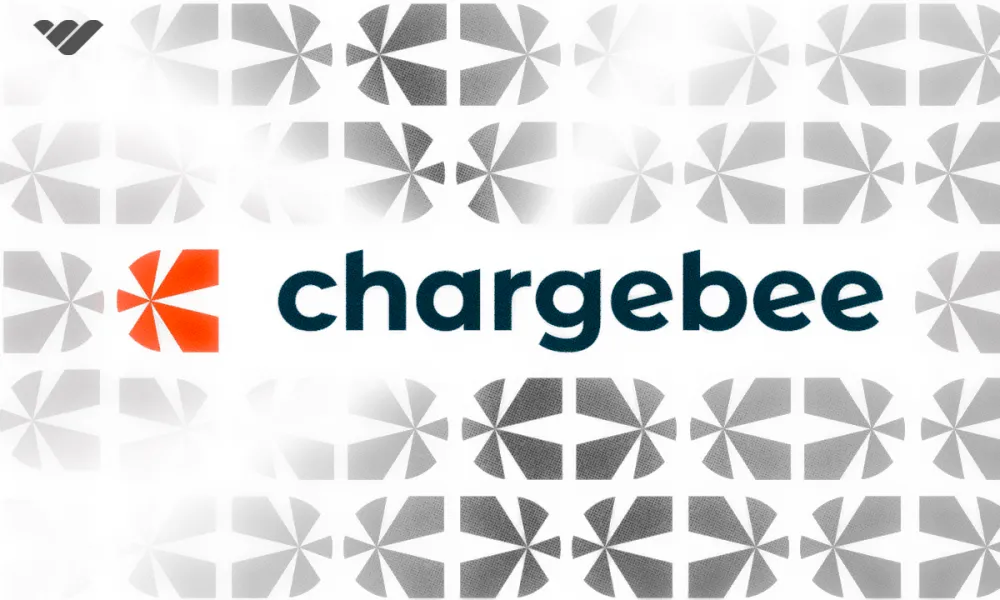Want to sell tech courses online? Uncover whether Pluralsight, known for its high standards and professional audience, is the best platform for your expertise.
You can probably recall occasions when you have sought a particular job or career but needed to retrain first. As you read this, many people are eager to work in tech and are looking for online courses that would aid them in this move.
If you have specialist expertise in tech, you could potentially train such people. The prospect of joining the course creation platform Pluralsight could look promising, as technology is set to transform 1.1 billion jobs within a decade.
Pluralsight hosts thousands of courses created by professionals in technology-driven industries. Notorious (but also praised) for its high standards, Pluralsight puts new creators through a lengthy audition process to test their credentials.
This Pluralsight review will examine the platform’s pros and cons, helping you to decide whether it’s the right place to sell your courses.
What is Pluralsight?
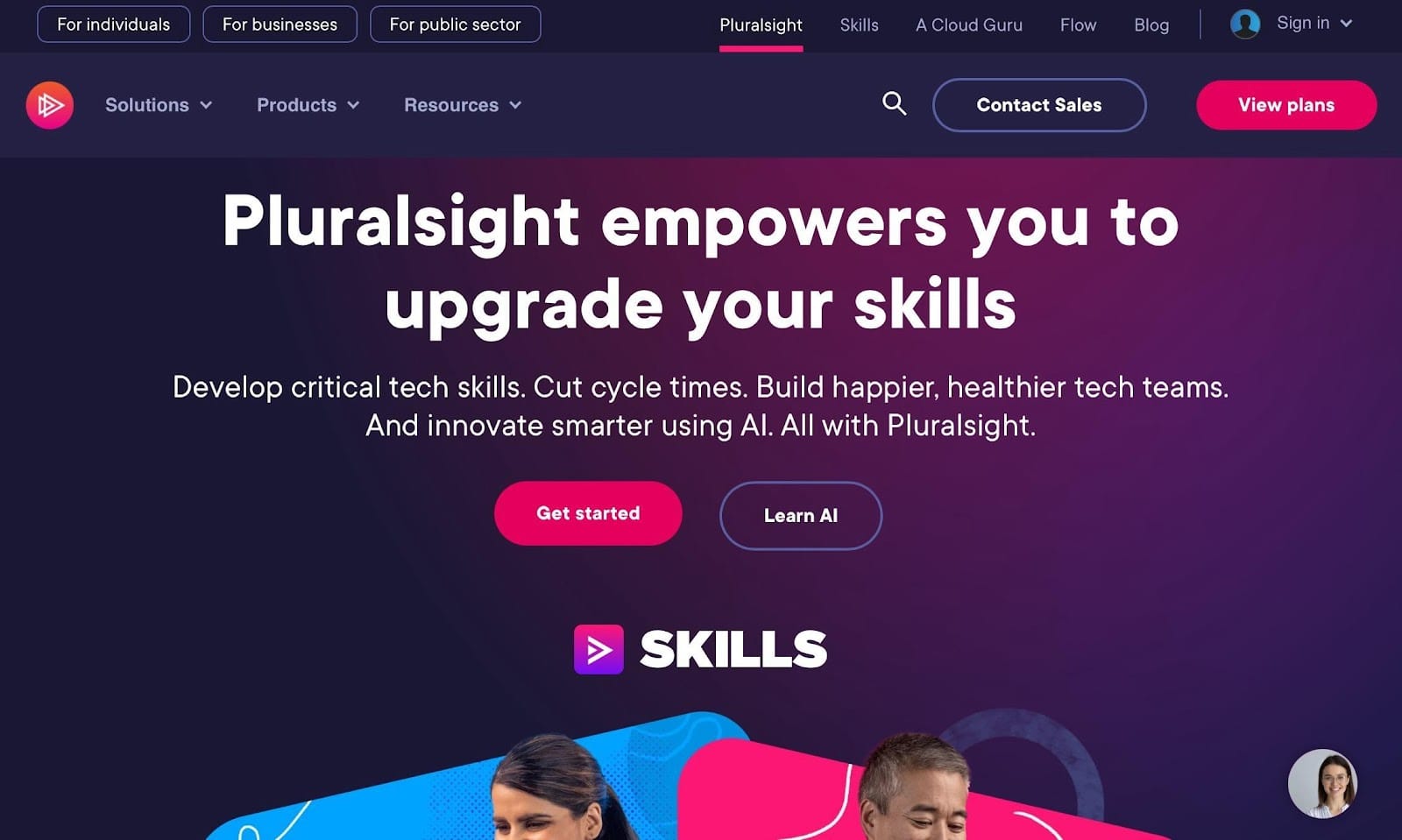
Pluralsight is an online education platform hosting courses created by industry experts in the technology sector. Pluralsight specializes in helping tech workers (and individuals aspiring to work in tech) learn industry-relevant knowledge and skills.
For this reason, the courses available here revolve around IT, computing, software development, and other related topics. This makes Pluralsight ideal for would-be tutors with years of technology experience under their belt.
If you are interested in teaching but only have basic knowledge of professional-grade tech, consider exploring alternative online course niches.
The platform further separates itself from the competition by instilling an extremely high standard of creators and instructors, with newcomers required to pass an audition.
| Pros ✅ | Cons ❌ |
|---|---|
| High-quality content | Audition phase |
| Less competition | Limited niches |
| High-paying | Very video-oriented |
| Not for beginners |
Who is Pluralsight for?
Pluralsight has historically been aimed at professionals in technology and IT. More recently, Pluralsight has broadened its horizons, adding courses related to higher education, healthcare, and finance.
When it first moved online in 2007, Pluralsight was an exclusive platform, only hosting courses from a select few creators. However, it has expanded and diversified significantly since 2013 and today boasts a creator base in the thousands.
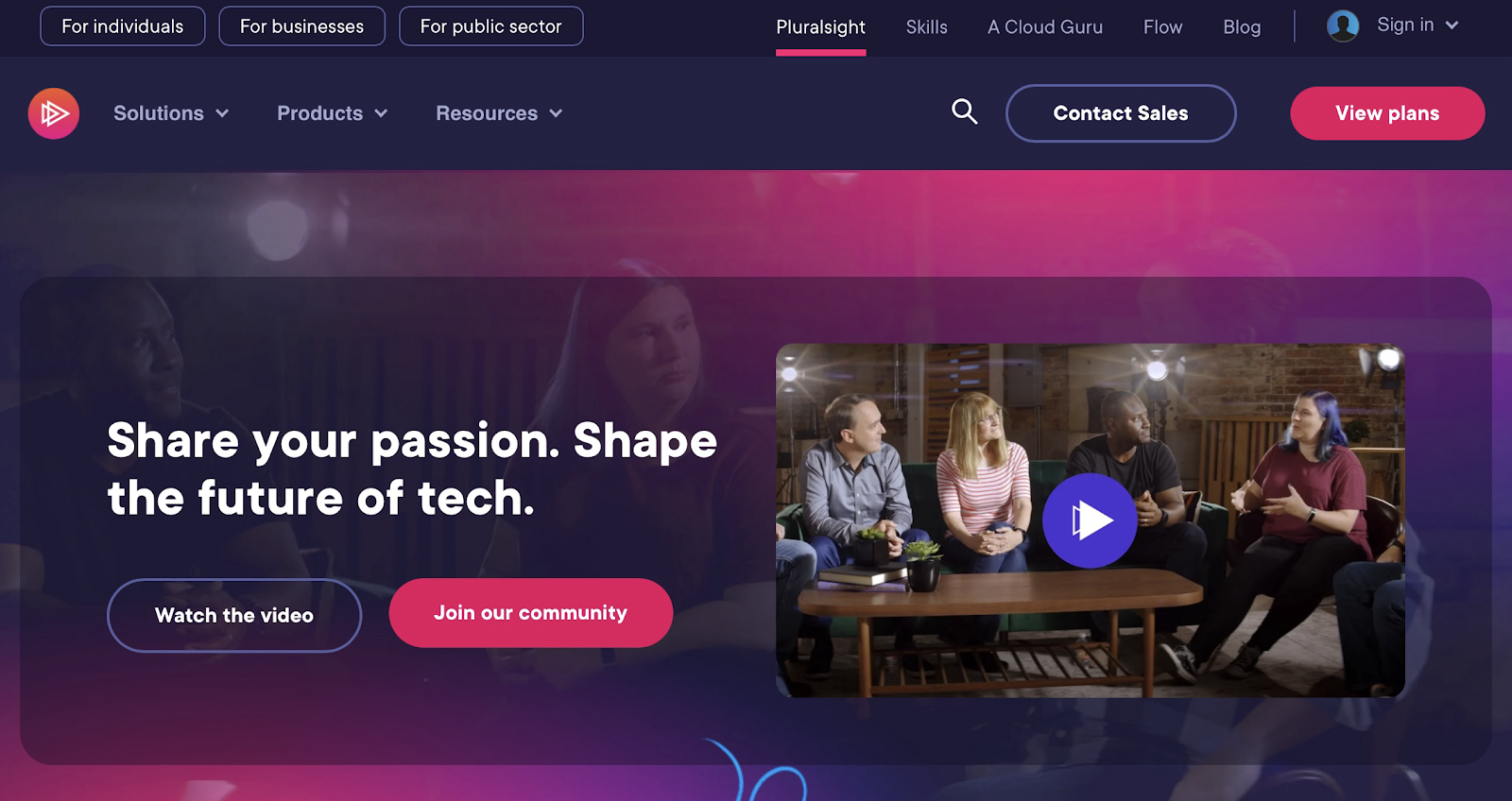
While it may now have more courses from more creators, Pluralsight remains far from inclusive. To start creating courses on it, you’ll have to apply for an audition where you display your experience in your field and the skills you’ve picked up.
It’s safe to say Pluralsight isn’t aimed at younger, less experienced course creators. The platform is only willing to welcome experts into the fold.
What subjects can you teach on Pluralsight?
Pluralsight’s specialist focus on technical skill development somewhat narrows down the topics you can cover. On the more positive side, with the platform encouraging the coverage of new, developing technologies, there will always be new avenues to explore.
Here are some of the topics available to you.
Software development
Software development courses are some of the most popular on Pluralsight, as there are so many subtopics within the niche. You can teach various programming languages, such as Python and JavaScript, or take a look at software design patterns.
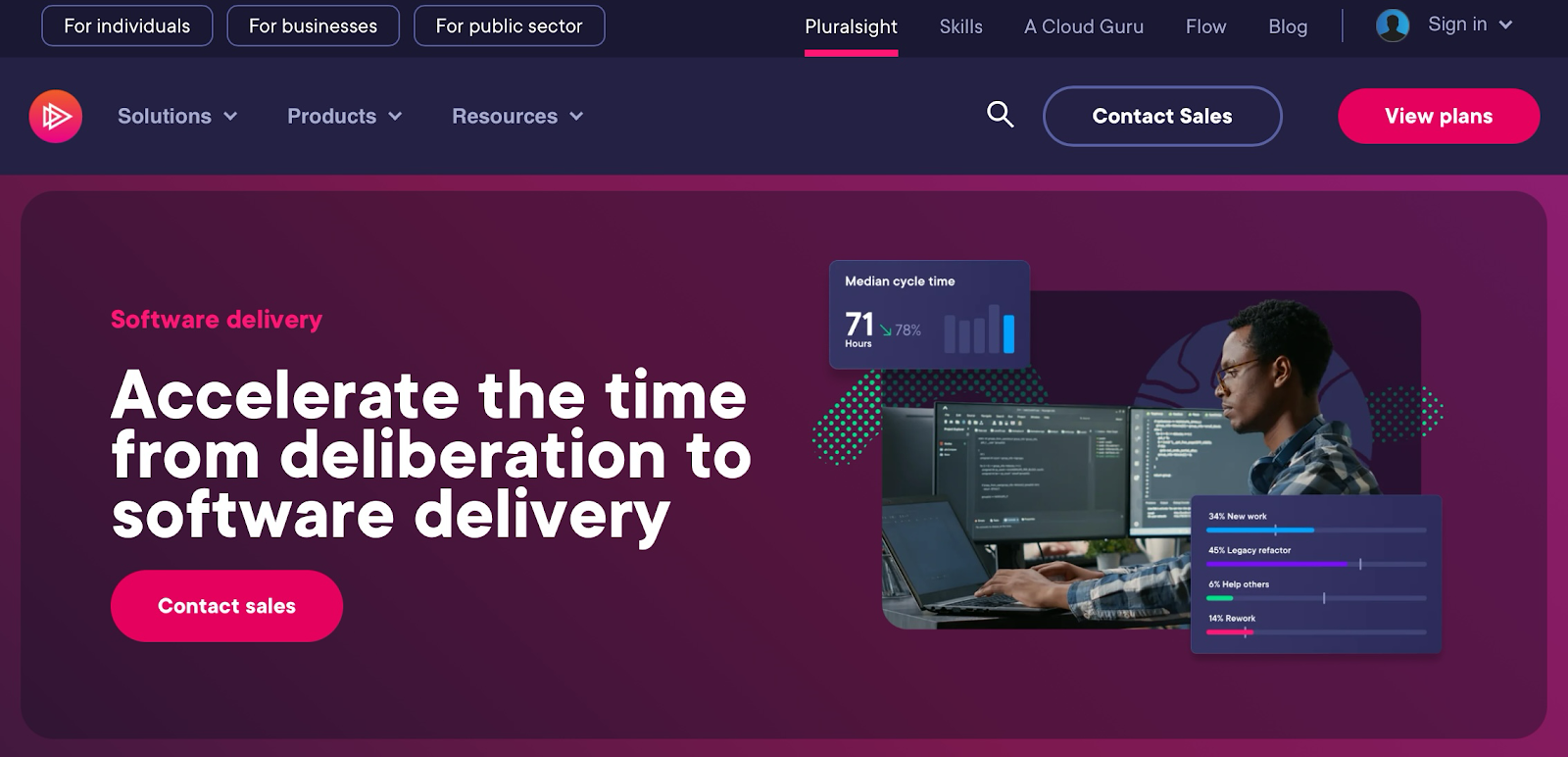
The software development niche is split into two sections: Web development and mobile development. With either, you can touch upon a wide range of topics.
IT and computing
A lot of Pluralsight courses are based around the world of IT and its many different subsections. These include:
- Cloud computing
- DevOps practices
- Cloud-native application development
- Networking and infrastructure
- System administration
Many students opt to take IT courses on Pluralsight, as the site has primarily made its name within that industry.
Cyber security
Another intriguing subject you might know more than a little about is cyber security. Why not make courses on it, each addressing a different subtopic of cyber security?
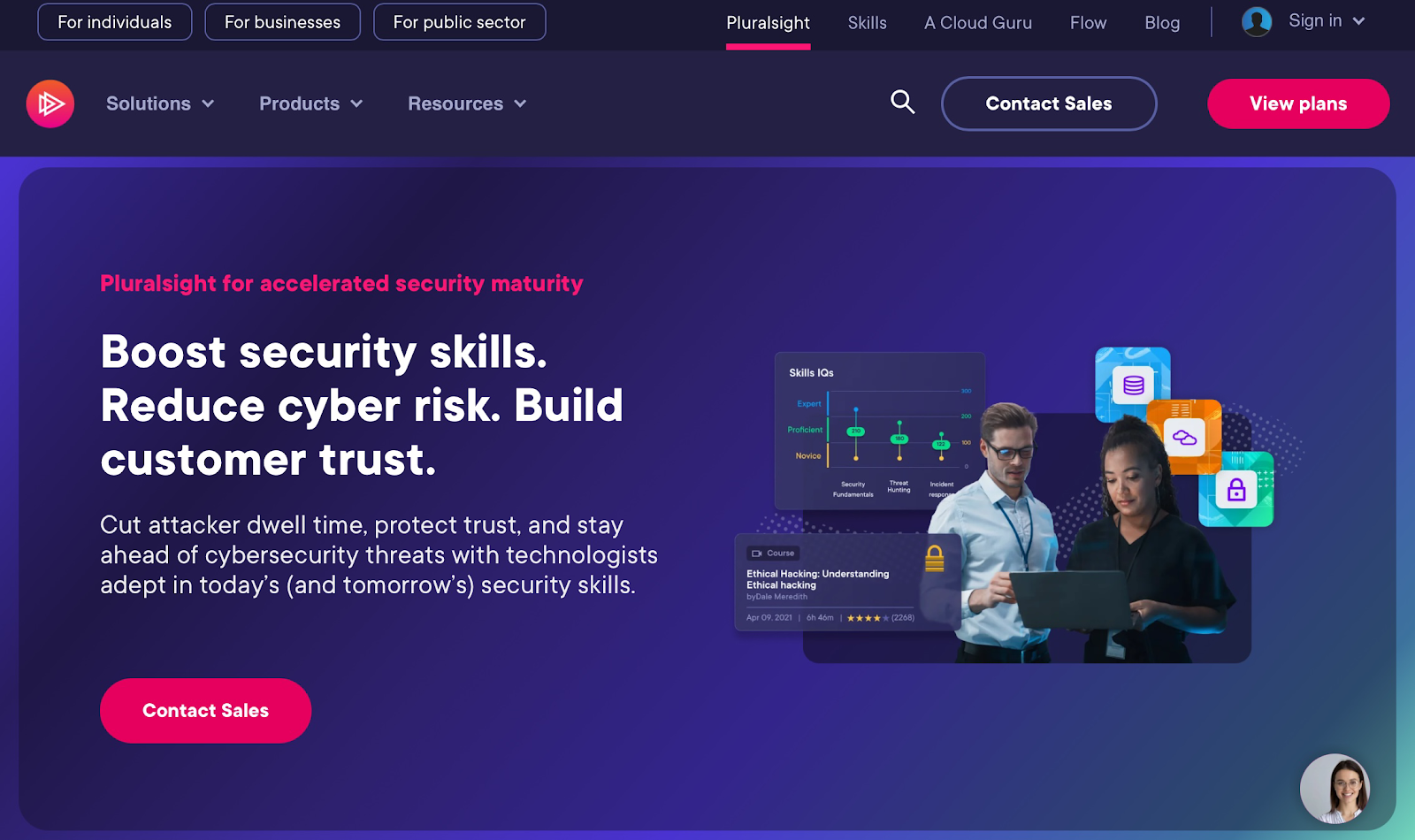
Your educational output in this area could help students understand all of the following issues crucial to keeping digital defenses watertight:
- Social engineering
- Cloud security
- Network security
- Ethical hacking
There are many different branches of cyber security — and a lot of people are eager to learn about them. After all, an organization suffering a data breach could be hit with a barrage of negative publicity as a result, putting its brand reputation at risk.
Artificial intelligence (AI)
With the rise of artificial intelligence being one of the main talking points in the tech world, high-level AI courses are extremely sought after. There are plenty of subsections to tackle, too — from machine learning to natural language processing.
As AI is such a heavily discussed topic, tutors tackling it will be more likely to attract traffic and enlarge their quarterly paychecks.
Emerging technologies
The tech world is always evolving — with new, exciting (sometimes also frightening) technologies often coming to the fore. Pluralsight is keen to keep its users in the know, hence the platform’s promotion of courses specializing in emerging sectors.
These include cryptocurrency and blockchains, not to mention quantum computing and more.
Creative topics
While there are a multitude of heavy topics to be covered on Pluralsight, you can also opt to stretch your creative legs. There is a demand for courses in graphic design, video editing, and user interface design.
On the whole, creative topics tend to take a backseat on Pluralsight, where comparatively ‘highbrow’ subjects are given greater favor. It’s not exactly a place for eccentric artists, but instead straight-laced professionals.
How can you structure your Pluralsight course content?
Three main types of educational content can be published on Pluralsight. These are:
- Video courses
- Assessments
- Labs
Video courses 🎥
Video courses make up the main bulk of the Pluralsight course library. These are exactly what you’d imagine: Lecture-style videos featuring a presenter and occasional infographics.
These courses exist on an area of the platform known as Skills. By going down the video route, you can ease yourself gently into Pluralsight content creation.
Nonetheless, even later down the line, video courses will inevitably remain your main source of income on the platform.
Assessments ✅
The purpose of assessments is to test your students’ knowledge of what you have taught them. You can go into great detail when creating assessments, making them adaptable for each individual.
Students will also get a tailored learning recommendation based on their assessment results.
Assessments won’t bring in as much money as video courses, as they don’t take nearly as much time or effort to complete.
Labs 🧪
The ‘labs’ aspect of Pluralsight is one of its best features, allowing students to gain hands-on experience in secure cloud sandbox environments. Labs are essentially simulated versions of real-world experiences.
So, students can put what they’ve learned into practice without running the risk of inconveniencing clients, customers, or work colleagues. If a student does make an error, they can simply learn from it, with no real harm done.
These virtual labs are tougher to create than video courses, as you’ll have to set up the practice environment yourself. However, they are the most effective way to hammer home the points you made in your video course.
How to use Pluralsight
Pluralsight isn’t as simple to join as many alternative course platforms, as entry standards are high. You’ll be expected to prove your worth to the Pluralsight community managers, who notoriously don’t just let everyone in.
Signing up
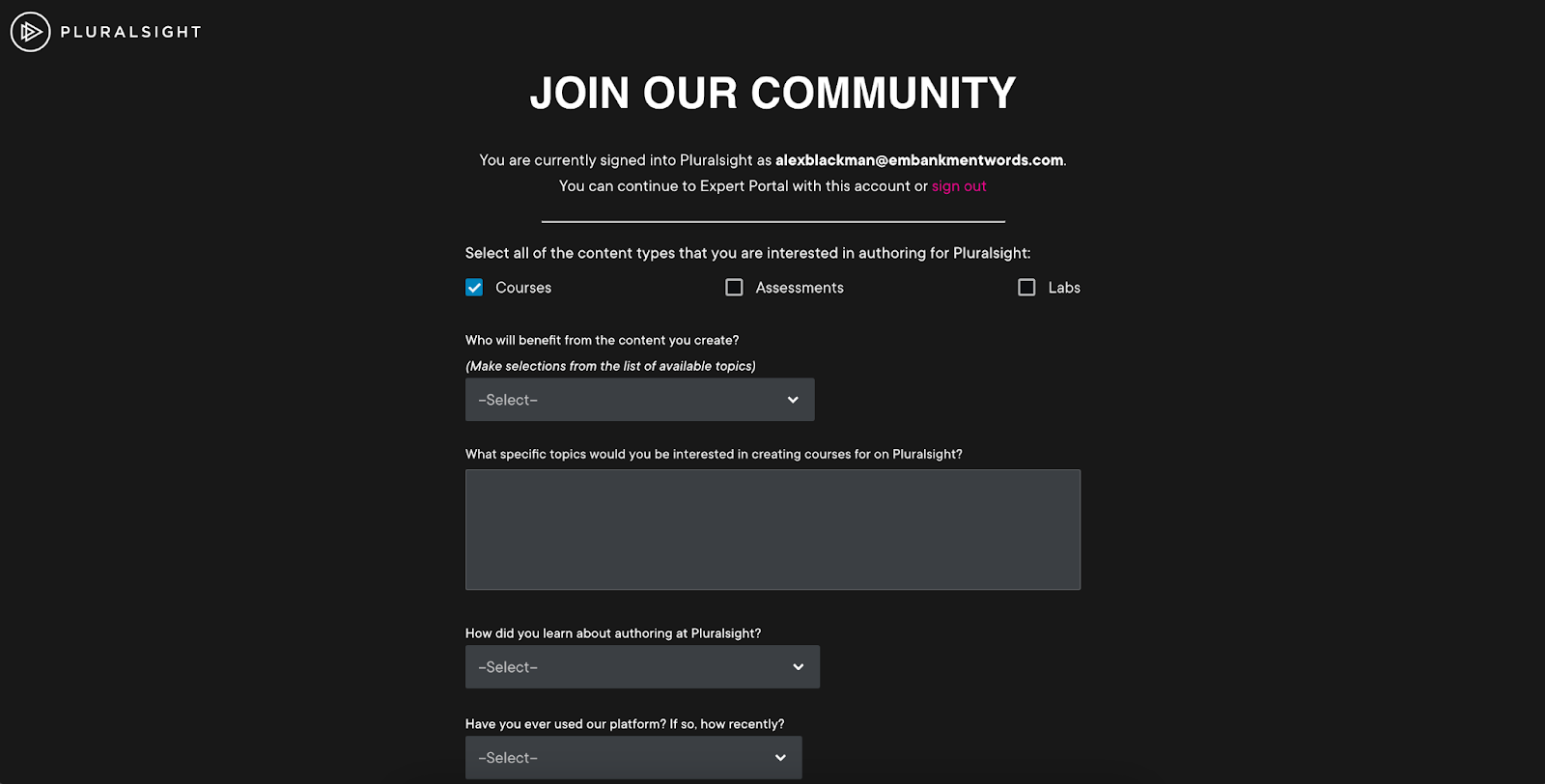
Your first task will be to complete the signup form, where you’ll have to decide your purpose on the platform. This is where you first specify whether you want to create courses, assessments, or labs (or two or, indeed, all three types of content).
The signup forms for Pluralsight are laser-focused, with hopeful course creators having to really niche down into their expertise. You’ll be asked specifically who you want to aim your courses at, with these options available:
- Big data analysts/engineers
- Business intelligence professionals
- Data professionals
- Generative AI
- Information/cyber security professionals
- IT operations
- Software developers
As you can tell, the clientele for Pluralsight courses isn’t just your average internet user.
Once you’ve navigated this section, you will be moved on to the next phase of your application.
Filling out your profile
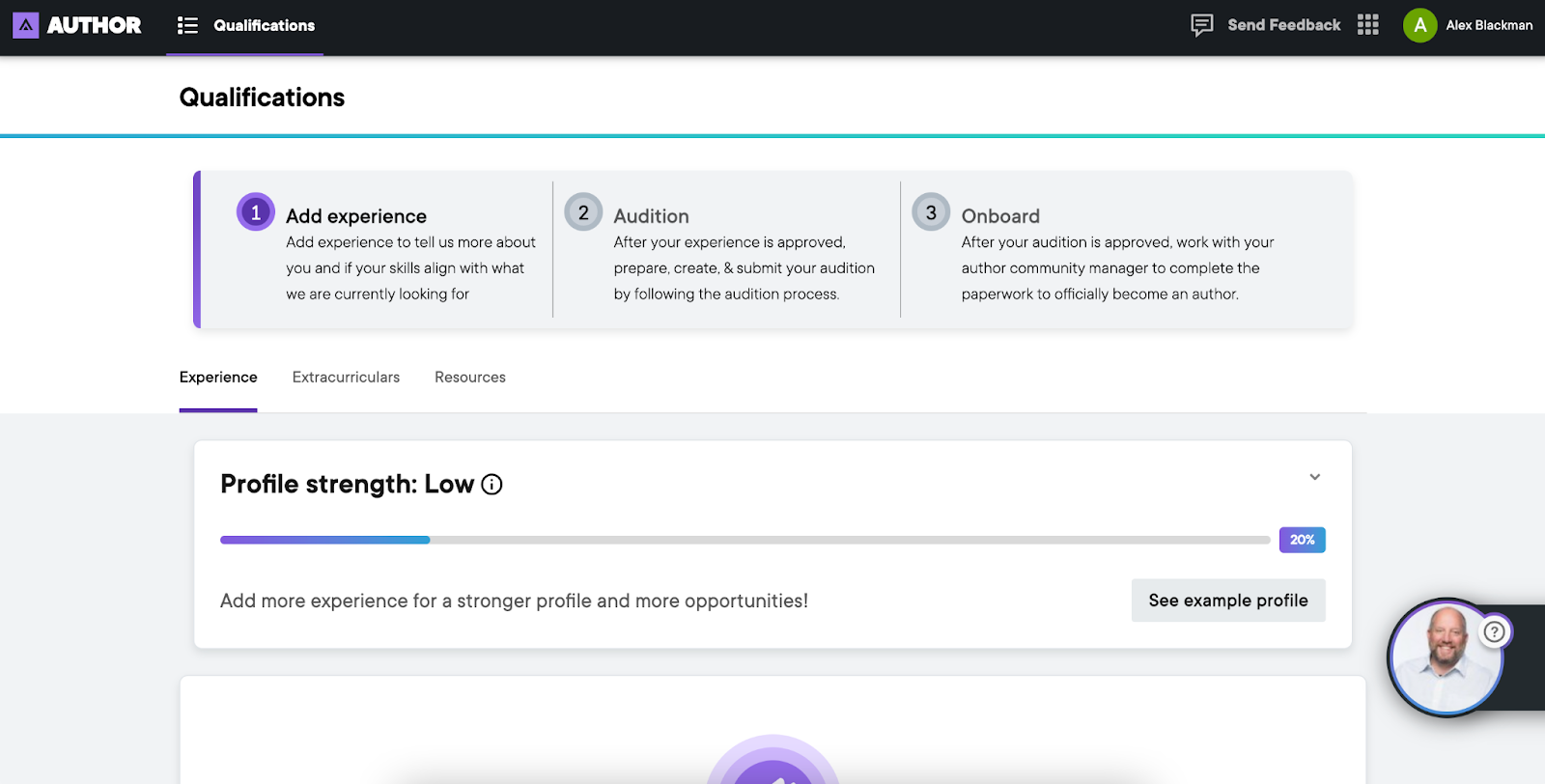
The next step is to provide Pluralsight with more information about you, your qualifications, and your credentials. You can connect your LinkedIn profile to the platform or choose to manually add details of your experience.
The latter approach is straightforward. It’s essentially like the forms you will undoubtedly fill out when applying for jobs online. List where you’ve worked, how long you’ve worked there, and what roles you undertook during that period.
You’ll also be asked to list the skills you have picked up. This is where things get quite technical. You’re not expected to list the usual set of skills seen on a typical postgraduate resume, such as punctuality, efficiency, and coffee machine mastery.
Instead, the platform provides you with a list of technical skill sets to choose from, such as proficiency in Eggplant DAI or Hex-Rays decompiling.
Other ways to enhance your profile
A great course creator has more strings to their bow than simply working a couple of great jobs, which Pluralsight knows. They also offer you the chance to mention some of your other accolades, such as books you’ve written or speaking engagements you’ve undertaken.
It’s easier to sell books than you might think. Are you an expert in a particular tech discipline? Write what you know, then publish and sell an ebook online.
The Pluralsight application process also enables you to mention your online presence and your presence within the community for extra brownie points.
The more recent the examples, the better. Pluralsight recommends you share experiences, content, and case studies of your work from the past two years.
Here is an example of a Pluralsight profile. As you can see, it’s very reminiscent of a resume. Ultimately, the aim is to prove to Pluralsight why they should allow you to create courses for their site.
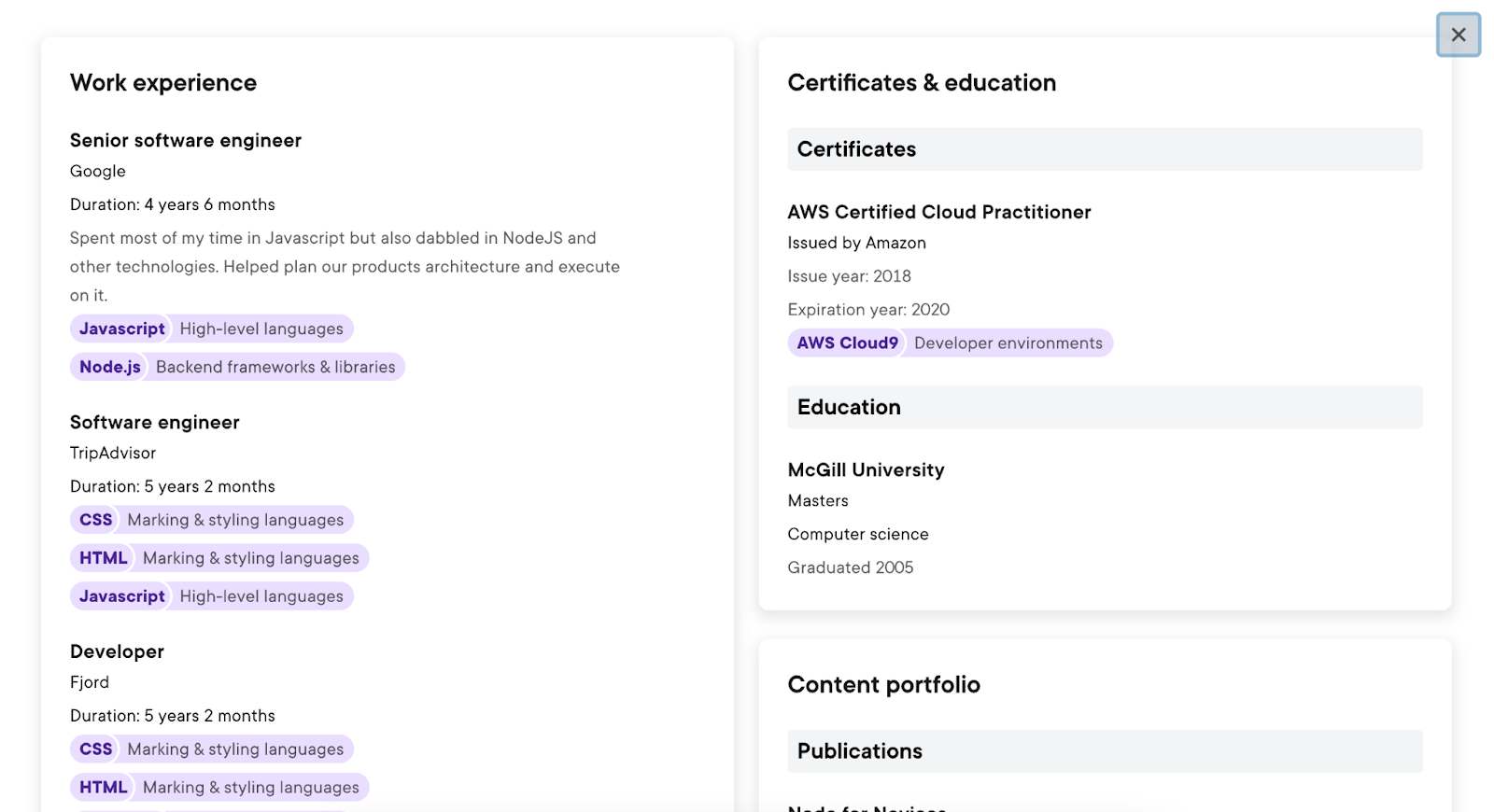
Extracurriculars
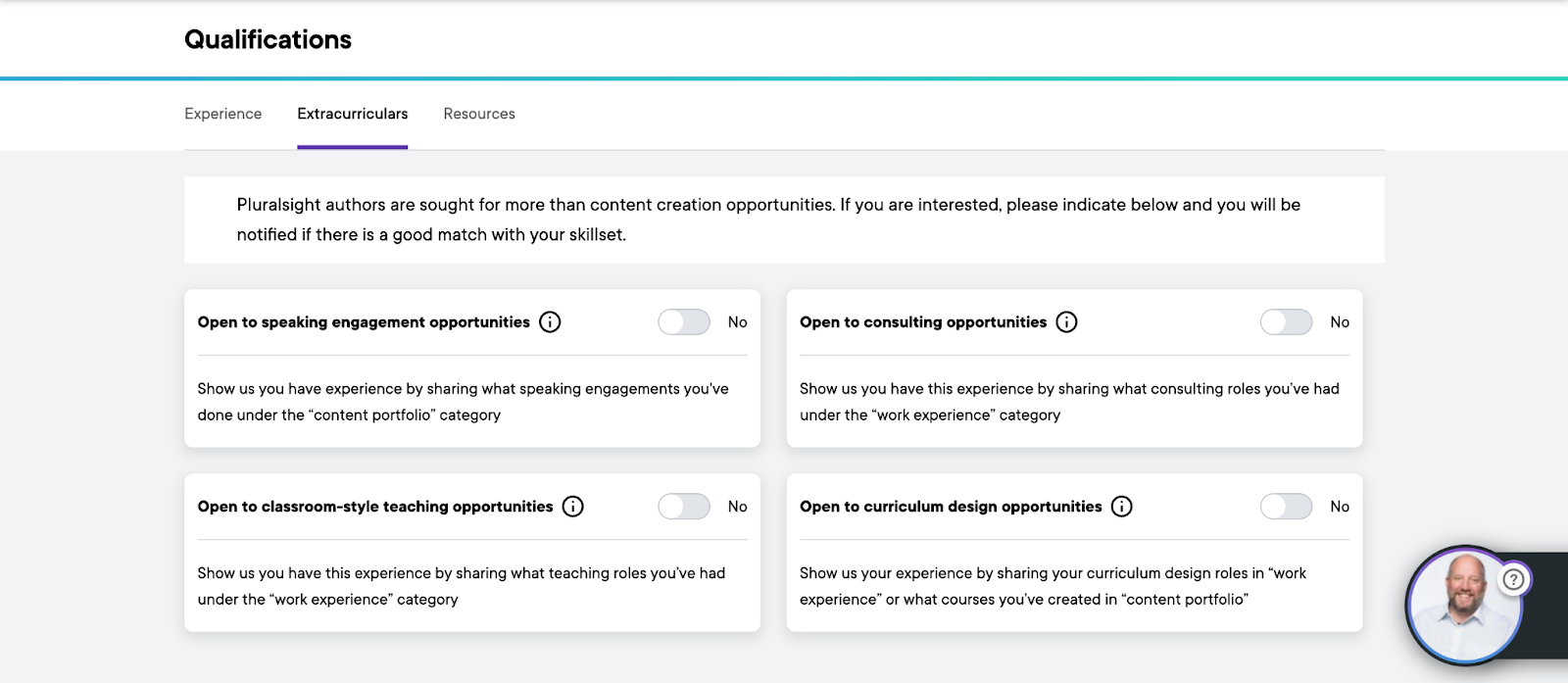
Pluralsight ideally wants you to become more than just a face on a screen, allowing you to say yes to various extracurricular engagements. These include:
- Speaking opportunities
- Consulting opportunities
- Classroom-style teaching opportunities
- Curriculum design opportunities
These extra options further demonstrate what kind of quality Pluralsight expects from its recruits. The company doesn’t simply want people who’ll create a one-time course to bring in a side income.
Instead, Pluralsight is looking for high-level tutors willing to share their knowledge in person as well as on the screen.
What if you already work a full-time job (not necessarily in the tech field) but also have bags of tech expertise to share? In that case, it might be best for you to forgo Pluralsight in favor of a course platform built more for flexibility.
One good case in point is Whop. Here, a Courses app would let you quickly and easily offer online courses for students to access at times that work for them.
Available resources

This signup process is far more intense than most course creators would expect from online course platforms. Thankfully, Pluralsight does provide additional resources to help you through it.
What does it take to thrive as a tutor on Pluralsight? These resources demonstrate the skills you need as well as guide you through what sort of things to include in your course.
There are also general resources to be accessed, such as:
- Articles on why you should become a course creator
- Information about payments
- Legal information
- FAQs
Finishing up

After entering all possible information likely to tempt the moderators into allowing you in, all you have to do is wait. As previously mentioned, the Pluralsight moderators don’t accept everyone, so don’t leave any information out that could help you.
This exclusivity does raise the standards of the content available on Pluralsight but also makes it unsuitable for new content creators. There is little opportunity to grow as a course creator if you can’t get your foot in the door in the first place.
So, unless you’re an absolute expert in your field with decades of experience behind you, it’s probably worth looking elsewhere.
How does Pluralsight pay its creators?
Now, you wouldn’t pour your heart and soul into a course without the possibility to cash in when it’s published. With Pluralsight, you can certainly cash in, with some creators making upwards of $180,000 a year on the platform.
This money can be earned in a variety of ways, starting with quarterly course performance payments.
Quarterly payments
Once you have uploaded your course to Pluralsight, you will be paid every quarter, with the payment amount determined by the following three factors:
- Viewership rate: The number of views the course generates.
- Viewership share: The number of views the course receives in comparison to other Pluralsight courses.
- Price-to-sales (PS) ratio: A valuation of the course’s importance to the platform.
So, if your course is raking in thousands of views and is seen as having great value to students, you’ll receive a healthy payday.
Completion payment
After your course is uploaded to Pluralsight and given the green light, you will receive a completion payment. This can range from $1,000 to $5,000 depending on the course’s size and potential importance to the platform.
Role IQ assessments
You can make extra money with Pluralsight by writing assessment questions. These generally pay between $15 and $17 per question. You can also review questions for a smaller sum between $3 and $5.
This won’t be your main income from the platform, but it’s a nice way to boost your financial takings for relatively little effort.
Projects
Creating projects for Pluralsight is tough work, but it pays up to $10,000 depending on its complexity. These projects can take up to four months to complete, which can devalue the overall end payment.
There’s plenty of money to be made by selling courses online, with some niches being more profitable than others. Check out which courses will make you the most money.
Pluralsight pros and cons
Pros 👍
- High paying: The top course creators on Pluralsight can potentially earn upwards of $180,000 for their courses. There is also a completion payment to be claimed once you hand your finished course in.
- Less competition: Due to market saturation, it can be difficult to get your course seen on a lot of platforms. Conversely, there are fewer tutors on Pluralsight. In short, joining Pluralsight can increase the chances of your teaching expertise actually getting noticed.
- High-quality content: If you are approved to create courses on Pluralsight, it’s a testament to your knowledge and ability to teach. You’ll be publishing your content alongside other industry professionals, hopefully spurring you on for personal improvement.
- Certification: Pluralsight offers you the chance to earn certifications that demonstrate the quality of your work. While they are not official accreditations, you can use them in your favor when applying for jobs.
- Flexibility: Once you have completed your first course on Pluralsight, there is no obligation for you to create your next one straight away. There is no minimum yearly course requirement.
Cons 👎
- Not for beginners: To be accepted onto Pluralsight, you will need to have years of experience behind you. It’s not easy to pass the audition process and your credentials will be tested.
- Limited course niches: As Pluralsight primarily caters to tech professionals, there are limited niches you can occupy. If you want to create courses on the platform, you’ll have to be an expert in one of very few fields.
- Limited customization: Pluralsight is all about information, not aesthetics. It isn’t somewhere you can effectively convey your own personal brand or visually customize your course by emblazoning it with vivid graphics.
- Video-oriented: If you don’t feel comfortable in front of a camera, Pluralsight probably isn’t right for you. Pluralsight is largely video-oriented, with the vast majority of courses being visual (rather than predominantly text-based).
Alternatives to Pluralsight
Whop 🏆
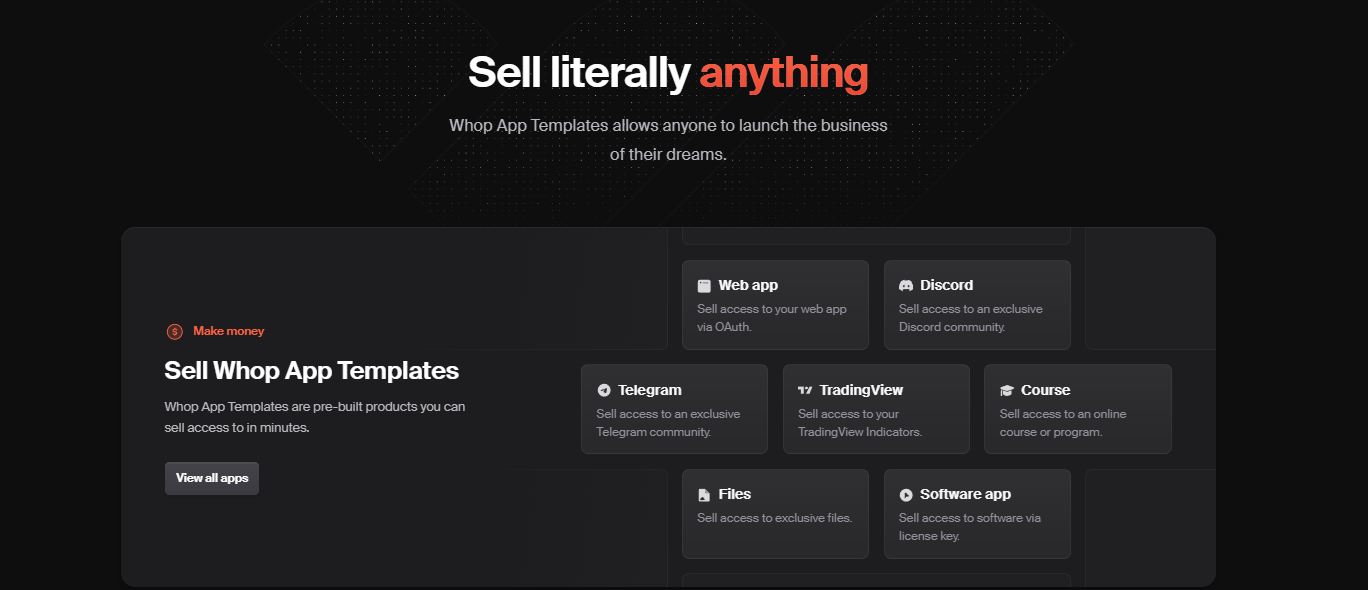
If you’re looking for a course creation website without any limitations, Whop is the ideal platform for you. With dozens of customization options and multimedia content capabilities, you can set your creativity free.
With Whop, you can create a course in any niche you wish, as long as you have the knowledge to back it up. You’ll also have a marketplace full of eager customers waiting to capitalize on your expertise.
Plus, Whop is completely free to join. There are no monthly fees, and you can keep up to 97% of the money you make on course sales.
Udemy
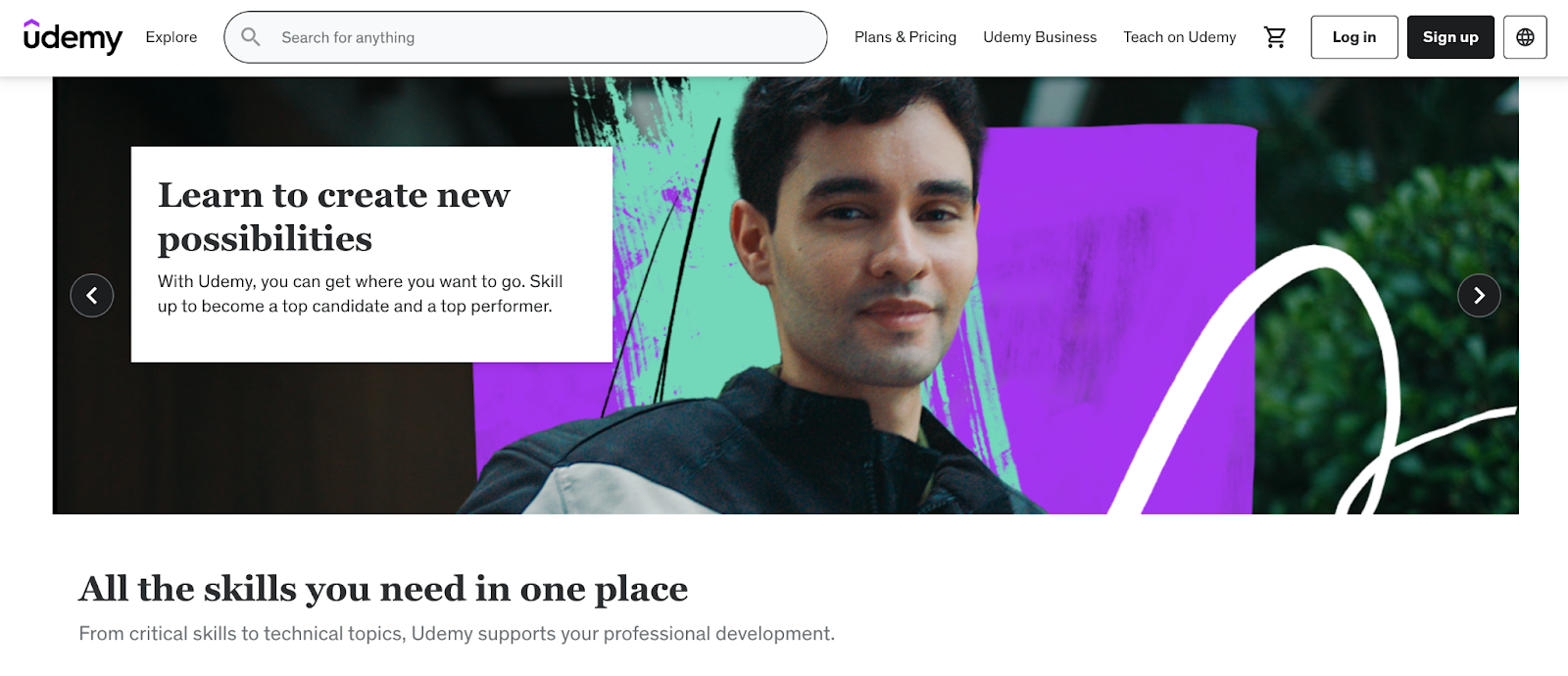
If you’re a budding teacher with ideas for creating content outside of the tech space, Udemy is an option. The platform currently hosts over 130,000 courses, so you’ll be a part of a bustling community.
Having such competition does make it tough to stand out, but if you manage to break through the crowd, you can earn a healthy income. Udemy has a similar payment scheme to Pluralsight, as you’ll be paid a fee depending on the amount of interaction your course generates.
As with Whop, you can create courses on Udemy for free, with the platform taking a commission for all of your sales.
Kajabi
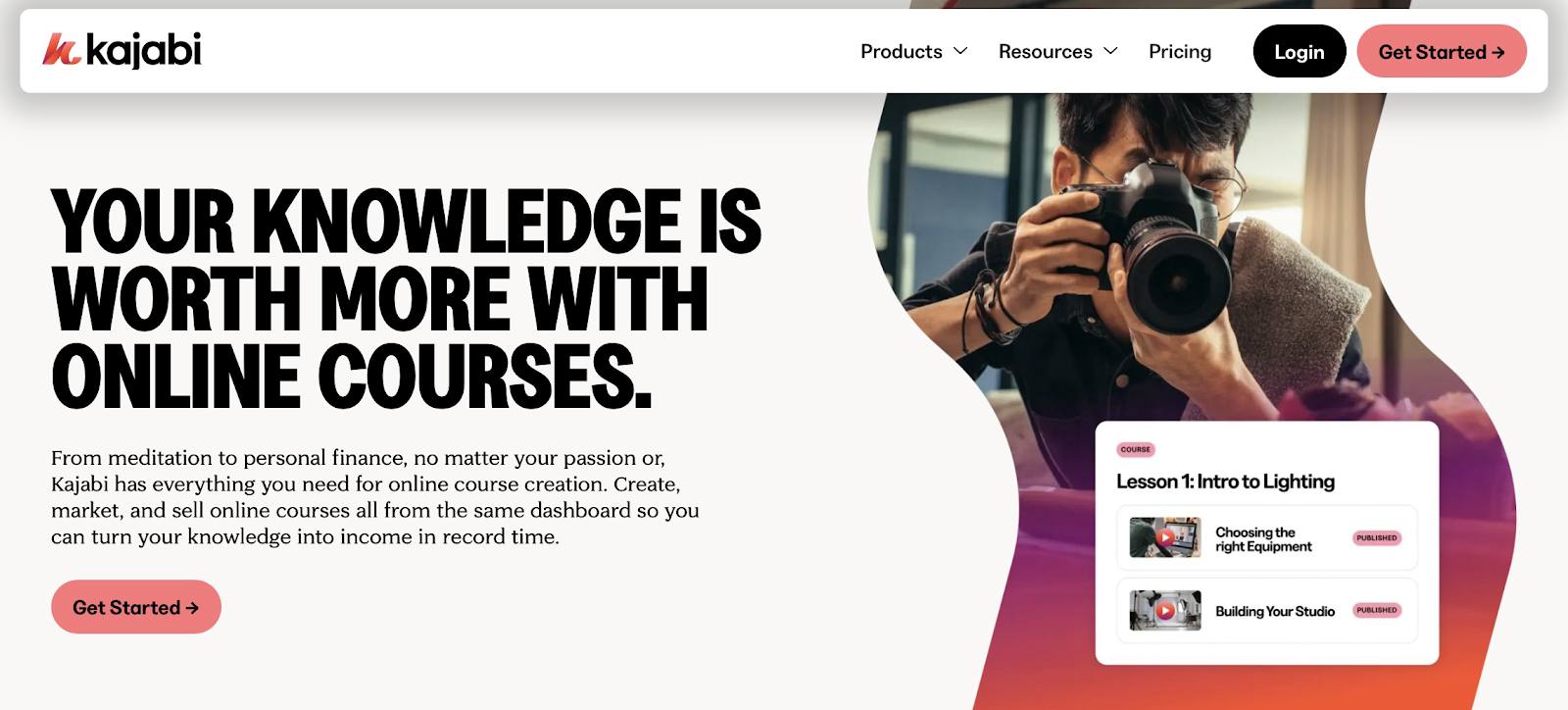
With Kajabi, it’s easy to assemble courses online without any need for prior experience. Like Whop, Kajabi gives you the apparatus to sell other digital products alongside courses.
However, for teachers, it’s noticeably more expensive to use than many other course creation sites. With the cheapest plan starting at $55 a month, there is an element of monetary risk involved with the platform.
Make course selling easy with Whop 🙌
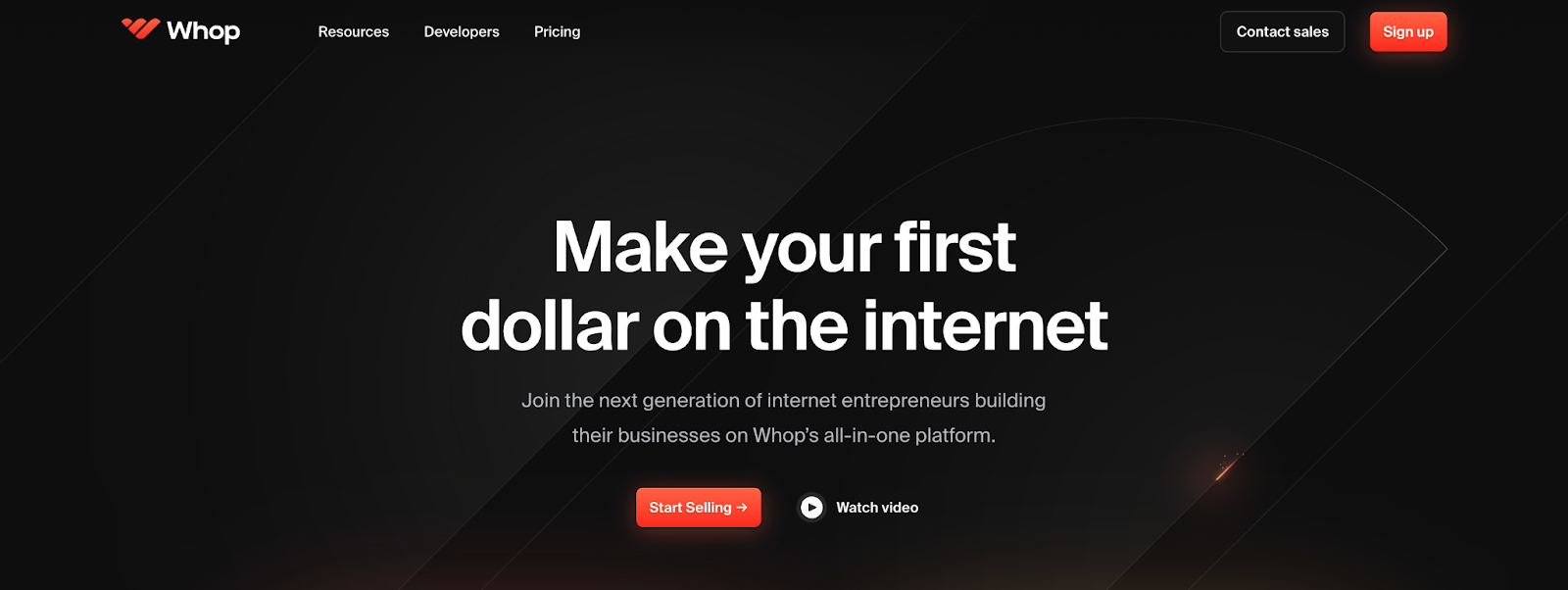
Selling your knowledge online in the form of a course doesn’t have to be as difficult as Pluralsight would suggest. That’s because of Whop, the all-in-one course creation platform that doesn’t require any auditions or complicated signup processes.
With Whop, you can start creating your course instantly, getting you on the way to monetizing your expertise in no time. It doesn’t matter what subject you want to teach, either — as there are no limits to what digital solutions you can sell on Whop.
Whop gives you your own online space you can customize with the platform's native apps. Whop’s Content and Files apps let you share digital learning materials with your students, who can also message each other using the Chat app.
Don’t waste time waiting for someone else’s approval. By getting started with Whop today, you can join a growing online community of boundary-pushing creators and eager-to-learn students. Here, you can sell your course in under 10 minutes.
Pluralsight FAQs
How much does Pluralsight pay?
Pluralsight doesn’t pay its creators a set amount. How much you are actually paid will depend on how many views your courses garner. Average incomes for Pluralsight creators are in the region of $99,000 to $185,000 a year.
How do you get started with selling courses on Pluralsight?
To start producing courses for Pluralsight, you will have to pass an audition overseen by a community manager. You will then be assessed on both your knowledge and your teaching skills before being approved.
Who will see your Pluralsight courses?
Pluralsight’s audience base is large, with over one million individuals and almost 10,000 companies using the platform. This audience is largely made up of professionals looking for high-level training.
How long do Pluralsight courses last?
Pluralsight courses are substantially longer than a lot of online courses and can last up to four years. As things often change during these periods, creators are given the chance to amend their courses after they are originally published.
Does Pluralsight pay you upfront?
Pluralsight payments are made every quarter and depend on how many views your course has received. The company will also pay a fee of between $1,000 and $5,000 per video course, depending on its length and consumer demand.



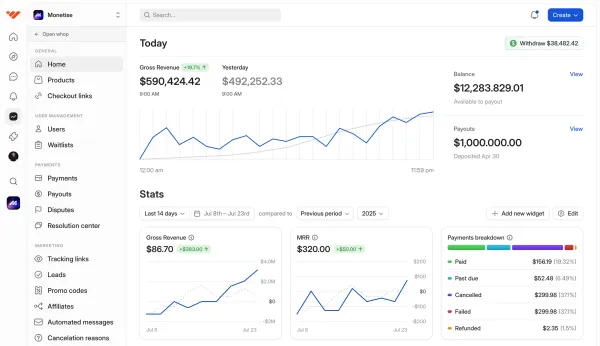

![20 top online coaching platforms [2026]](/blog/content/images/size/w1000/2025/11/20-top-online-coaching-platforms--2025---copy.webp)
![Mighty Networks: is it the best choice for your community? [2026 review]](/blog/content/images/size/w1000/2024/05/What-is-Mighty-Networks-Features--Pricing--and-Alternatives-2024-Review.webp)

![The best online newsletter platforms [2026]](/blog/content/images/size/w1000/2024/05/Best-online-newsletter-platforms.webp)
![Top 17 best online course platforms to sell your course [2026]](/blog/content/images/size/w1000/2024/06/Best-Online-Course-Platforms.webp)

